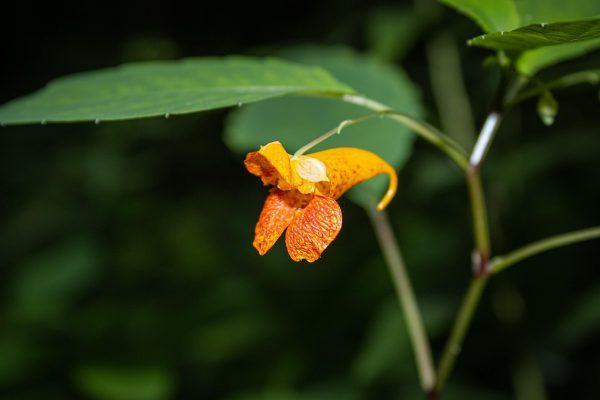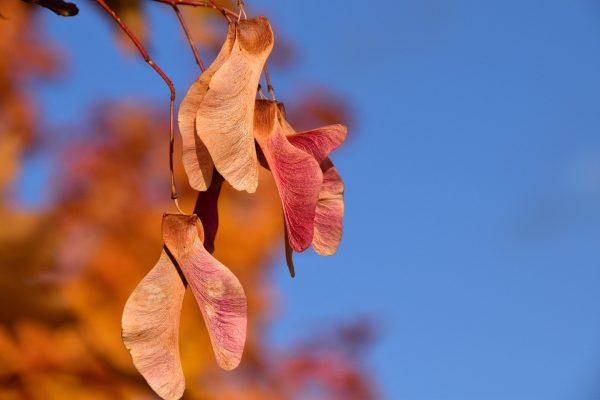Secret Admirers in the Woods: Why Seeds Want You to Go Hiking
Ever returned from a fall hike covered in burrs, sticky seeds, or plant debris? You’ve just experienced epizoochory — the scientific term for seeds that hitchhike on animals and hikers. Every autumn, plants rely on humans and wildlife to spread their seeds across miles of forest terrain. Those annoying burrs clinging to your socks aren’t accidents — they’re proof you have secret admirers in the woods. Here’s why seeds want you to go hiking.

I love to hike. I especially like hiking in autumn. The changing colors of the leaves and the musky, sweet smell of the woods are like watching a forest bedtime story take place.
Not everything gets ready for bed in the fall woods. Many birds and mammals are active during the winter, and they are getting their second wind during the fall transition. Deer are in full rut and looking for mates. Owls are more vocal, hooting a haunting chorus to claim territory, mates, and for their young to learn the language.
Autumn is a great time to experience the forest wilds and fall in love with its beauty. The forests get attached to us, too.
Why Seeds Need Hikers: Your Role in Forest Survival
Each fall, the summer flowers of plants transform into seeds that disperse or spread to grow again in the spring. Forests and grasslands grow and flourish by spreading seeds in multiple ways. Many seeds spread on their own; others need help.
• Anemochory = wind travel
• Hydrochory = water float
• Endozoochory = eaten and pooped out
• Epizoochory = hitchhiking on animals
Seeds That Drop: The Simplest Dispersal Method

Some seeds keep it simple—they just drop to the ground using gravity. This is how oaks, hickories, and chestnuts spread. There’s no wind, no animals, just a straight fall to earth. There are also a few plants that “throw” their seeds. The flowers of Jewelweed (Impatiens capensis) and Witch Hazel (Hamamelis virginiana) develop into packed seed pods. As the pressure builds up inside them, they pop and eject their seeds in all directions.
Wind Dispersal: How Maple Seeds Travel Miles (Anemochory)

There are plants that spread their seeds in a whole new direction through dispersal and a little help from wind, water, or animals. Maple trees use the wind. Their propeller-shaped seeds twirl as they fall. The wind carries them off away from the tree. This is called anemochory (anemo = wind, chory = dispersal). Some Asters and Milkweeds have fluffy seeds that also catch the wind and float away.
Water Dispersal: Seeds That Float to New Destinations
Many aquatic and some terrestrial plant species use water flotation to spread their seeds. Their buoyant seeds bob on the water, seeking a place to rest downstream. Water lilies and palm trees take advantage of this method. Those coconuts can travel thousands of miles this way.
Many plants have to get even more creative—and a little attractive. Instead of relying on wind or water, they use animals to spread their seeds far and wide. Some offer a tasty reward; others just hitch a ride.
Seeds That Get Eaten: Forest Spread Through Digestion (Endozoochory)
We have plenty of plants and trees that have evolved their fruit to be eaten and have their seeds pooped in a new place. This is called endozoochory (edno = within, zoo = animal, chory = dispersal). Birds and mammals are the primary transporters, but aquatic animals and insects will do the same. Who doesn’t enjoy snacking on some colorful, sweet berries?
Seeds That Hitchhike: Why Burrs Stick to Your Hiking Clothes (Epizoochory)

Then there are the hitchhikers. This is called epizoochory (epi = outside, zoo = animal, chory = dispersal). These types of seeds develop little hooks, barbs, and even mucus to catch onto feathers, fur, and clothing. All it takes is a critter or a hiker wandering through the brush, and the burrs from burdock, cleavers, and some asters and carrots will latch on and hitch a ride to a new destination.
Sticky Seeds: The Mucus Method of Plant Dispersal
Other plants ditch the hooks and literally stick to us with a sticky mucus when they get a little wet. Chia, Flax, and even Basil disperse this way. Those same herbs we love to use in cooking love us back when they want to spread their seeds.
I’ve had plenty of hitchhiking plants follow me home from distant woods after a hike. I don’t mind these secret admirers too much. This process shows just how much the forests and fields like having us and other animals around.




